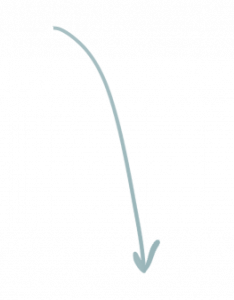I have always had issues with Irritable Bowel Syndrome, better known as IBS. Let’s go back to 2015 when I was suffering from major abdominal pain, cramping and bloating, and not being able to have a bowel movement for a week.
I finally was told I needed to go to a Gastroenterologist and the technician took an x-ray of my stomach and said the words “wow, you are full of shit.” There was no explanation as to why my body was doing this and it was giving me a total mind f*ck. The doctor prescribed me medication to help; however, it really didn’t help at all.
It wasn’t until one of my friends told me about the FODMAP diet that I finally found some relief. FODMAP stands for: “fermentable oligosaccharides, disaccharides, monosaccharides, and polyols, are short-chain carbohydrates that are poorly absorbed in the small intestine and are prone to absorb water and ferment in the colon.” Basically, certain foods have levels of sugars that our bodies cannot break down as easily and this is when issues arise.
I was confused as I had never heard about this before and I was shocked my doctor never brought it up as a solution to my issues. I had nothing to lose, so I looked it up and learned many things I was eating were on the high “avoid” list so I switched up my grocery list and replaced everything I was eating with low items.
From that moment, my life changed. Following this list, eating the right foods, and staying away from others actually helped with my IBS. I didn’t have abdominal pain, no more bloating/cramping — and finally, I was going to the bathroom in a healthy manner, no more being full of shit.
Here is what the FODMAP diet is and why you might be interested in it!

What are FODMAPs?
This diet actually has a reason for the name! ‘Fodmap’ is actually an acronym for:
-
Fermentable (carbs that are fermented by the bacteria instead of being broken down by our bodies)
-
Oligosaccharides (the short-chain carbs — wheat, rye, and legumes)
-
Disaccharides (pairs of sugar molecules — usually lactose is the most common)
-
Monosaccharide (single-sugar molecules — cane sugar and honey)
-
Polyols (sugar alcohol — especially found in sugar-free food)
Does that explain everything? Well, not exactly, but basically, they’re different carbohydrates usually found in foods like onions, garlic, mushrooms, apples, lentils, rye, and milk. These foods will usually cause diarrhea or constipation, especially for people suffering from IBS.
The Diet Plan
View this post on Instagram
With this diet, people usually eliminate foods with high FODMAPs for six to eight weeks. After those weeks, FODMAP foods can be slowly introduced back into your system. This is not a diet that should be maintained for a long period of time, just enough that your body can go back to stimulating the growth of beneficial bacteria for your gut. See the time you’re on this diet as a time to heal — you may only need to follow it once in a while to get your gut health back on track!
Why should I do this diet?
View this post on Instagram
If you don’t have IBS, that doesn’t mean you shouldn’t look into this diet. While it is most common for people with IBS to be aggravated by these foods, people with other gastrointestinal issues also could benefit from this food plan. Other autoimmune diseases that may be helped by this diet are rheumatoid arthritis, multiple sclerosis, eczema, fibromyalgia, and migraines.
Some symptoms to look for that may be caused by eating high FODMAPs are: gas, pain, bloating, abdominal distention, abdominal pain, diarrhea, and a feeling of fullness after you have eaten only a small amount of food.
As always, make sure to check with your doctor before switching up your diet plan!
Low FODMAP foods to eat
View this post on Instagram
Vegetables: Sprouts, bell peppers, carrots, green beans, bok choy, cucumber, lettuce, tomato, zucchini, bamboo shoots, eggplant, ginger, chives, olives, and potatoes.
Fruits: Oranges, grapes, honeydew melon, cantaloupe, bananas, blueberries, grapefruit, kiwi, lemon, lime, and strawberries.
Meat: Beef, pork, chicken, fish, and eggs.
Grains: Rice, oats, quinoa, cornflour, sourdough, and gluten-free bread and pasta.
Non-dairy milk: Almond milk, rice milk, and coconut milk.
Drinks: tea, coffee, fruit juice not from concentrate, and water.
Nuts: Almonds, macadamia, peanuts, walnuts, and pumpkin seeds.
High FODMAP foods to avoid
Vegetables: onions, garlic, cabbage, broccoli, cauliflower, snow peas, asparagus, artichokes, celery, sweet corn, brussels sprouts, and mushrooms.
Fruits: peaches, apricots, nectarines, plums, prunes, mangoes, apples, pears, watermelon, cherries, and blackberries.
Wheat and rye: Bread, cereals, pasta, crackers, and pizza.
Dairy products: milk, soft cheese, yogurt, and ice cream.
Sweeteners: High fructose corn syrup, honey, and agave nectar.
Drinks: Alcohol, sports drinks, and coconut water.
So what now?
Know that the foods listed above are not classified as ‘good’ or ‘bad’ foods. Every food, unless it is highly processed and not at all natural, benefits you. This diet is not to make you fear foods or label certain food groups as unhealthy. Understand that it’s hard to completely eradicate a certain food group out of your diet, so have grace for yourself if you can’t completely go low FODMAP!
Also, understand that this is not a casual diet to partake in. People who do this diet usually are prescribed it by their dietitian or doctorAlways consult with your doctor before starting a new eating plan!

Have you tried a low FODMAP diet or are looking to start one? Comment below!
For More Health Info And Tips, Read These:
Get Your Gut Health In Tip-Top Shape With These 5 Super Easy Food Routines
Kim Kardashian Swears By This Secret Ingredient. Should You Try This Superfood?

